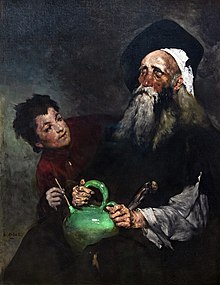
Hispagnolisme (French: espagnolisme pronunciation) is the inordinate love of all things Spanish, a craze for which spread through French society, and much of the associated art world, in the 19th century.
Origins
Hispagnolisme first began to emerge in the 18th century, as seen in figures like Fragonard. It received a powerful impetus from Napoleon's Spanish campaigns, during the Peninsular War; and took off fully in French society in and after the 1830s.
Apex
Writers like Merimee, and musicians like Bizet, profited from, and also helped foster, Hispagnolisme; as did such painters as Manet, with his Spanish-derived masterpiece Le Déjeuner sur l’herbe.
In Britain, hispagnolisme had an influence on artists such as Sargent.
Hispagnolisme was still powerful enough in Paris at the close of the century for Pablo Picasso to finance his early stays there with pictures of bullfights and Spanish peasant themes.
See also
References
- D Sutton, Nocturne (1963) p. 21
- "19thC Spanish fans". Archived from the original on 2021-04-13. Retrieved 2019-04-07.
- J Richardson, A Life of Picasso (London 1991) p. 153
- J Richardson, A Life of Picasso (London 1991) p. 153
- K Adler, Manet (1992) p. 11
- J Golding, Visions of the Modern (1994) p. 112
- C Baker, The Discovery of Spain (2009) p. 29
- J Richardson, A Life of Picasso (London 1991) p. 178 and 195
Further reading
- A F Gillard-Estrada, Beyond the Victorian/Modernist Divide (2018)